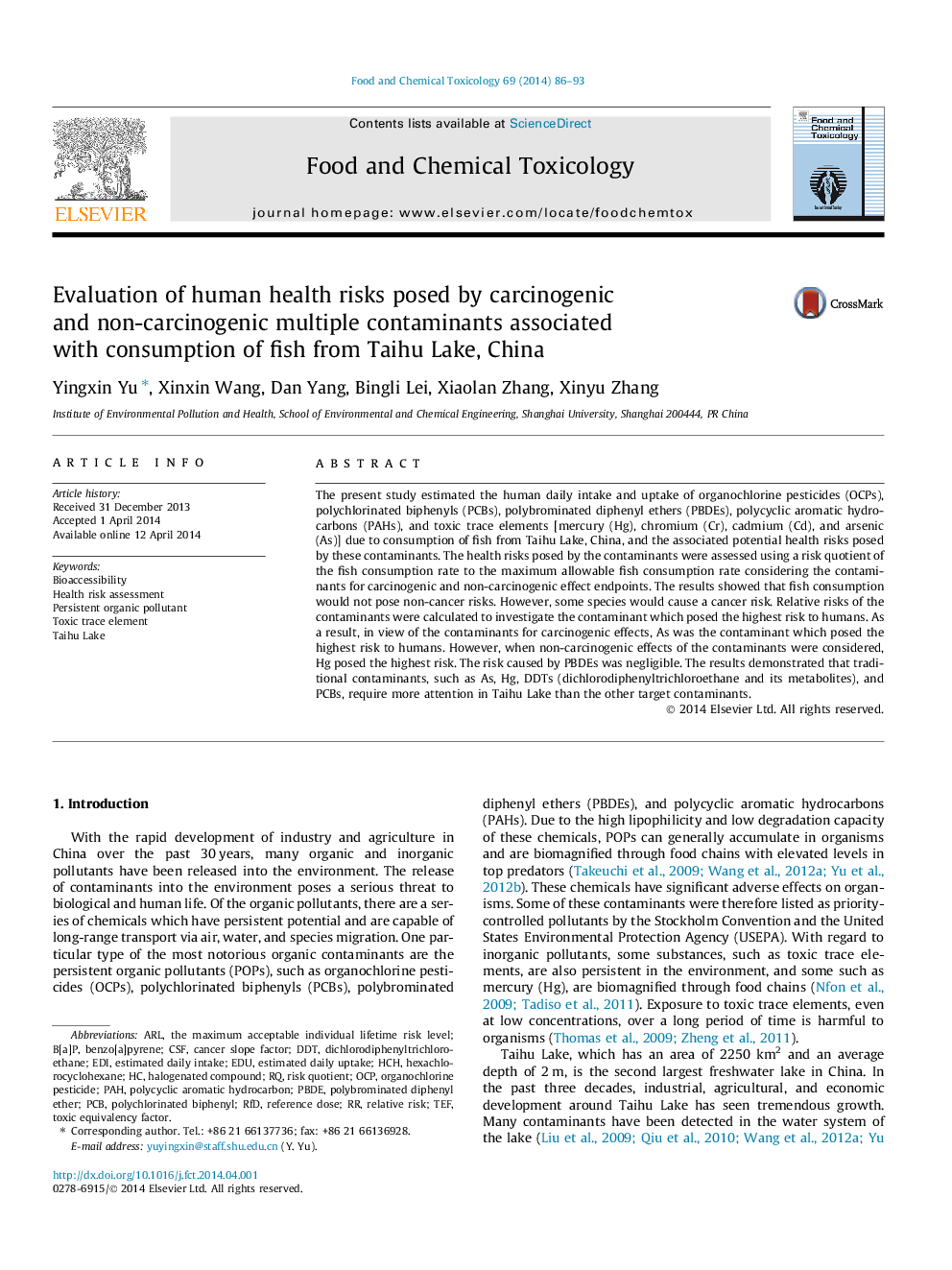| Article ID | Journal | Published Year | Pages | File Type |
|---|---|---|---|---|
| 5850245 | Food and Chemical Toxicology | 2014 | 8 Pages |
Abstract
The present study estimated the human daily intake and uptake of organochlorine pesticides (OCPs), polychlorinated biphenyls (PCBs), polybrominated diphenyl ethers (PBDEs), polycyclic aromatic hydrocarbons (PAHs), and toxic trace elements [mercury (Hg), chromium (Cr), cadmium (Cd), and arsenic (As)] due to consumption of fish from Taihu Lake, China, and the associated potential health risks posed by these contaminants. The health risks posed by the contaminants were assessed using a risk quotient of the fish consumption rate to the maximum allowable fish consumption rate considering the contaminants for carcinogenic and non-carcinogenic effect endpoints. The results showed that fish consumption would not pose non-cancer risks. However, some species would cause a cancer risk. Relative risks of the contaminants were calculated to investigate the contaminant which posed the highest risk to humans. As a result, in view of the contaminants for carcinogenic effects, As was the contaminant which posed the highest risk to humans. However, when non-carcinogenic effects of the contaminants were considered, Hg posed the highest risk. The risk caused by PBDEs was negligible. The results demonstrated that traditional contaminants, such as As, Hg, DDTs (dichlorodiphenyltrichloroethane and its metabolites), and PCBs, require more attention in Taihu Lake than the other target contaminants.
Keywords
PAHRfDARLTEFdichlorodiphenyltrichloroethaneHCHEDIOCPPCBPBDEB[a]PEdUTaihu LakeOrganochlorine pesticidePersistent organic pollutantHealth risk assessmentBenzo[a]pyrenePolychlorinated biphenylEstimated daily intakeHalogenated compoundRelative riskBioaccessibilityReference dosePolybrominated diphenyl etherDDTRisk quotientCancer slope factortoxic equivalency factorCSFHexachlorocyclohexanePolycyclic aromatic hydrocarbon
Related Topics
Life Sciences
Agricultural and Biological Sciences
Food Science
Authors
Yingxin Yu, Xinxin Wang, Dan Yang, Bingli Lei, Xiaolan Zhang, Xinyu Zhang,
